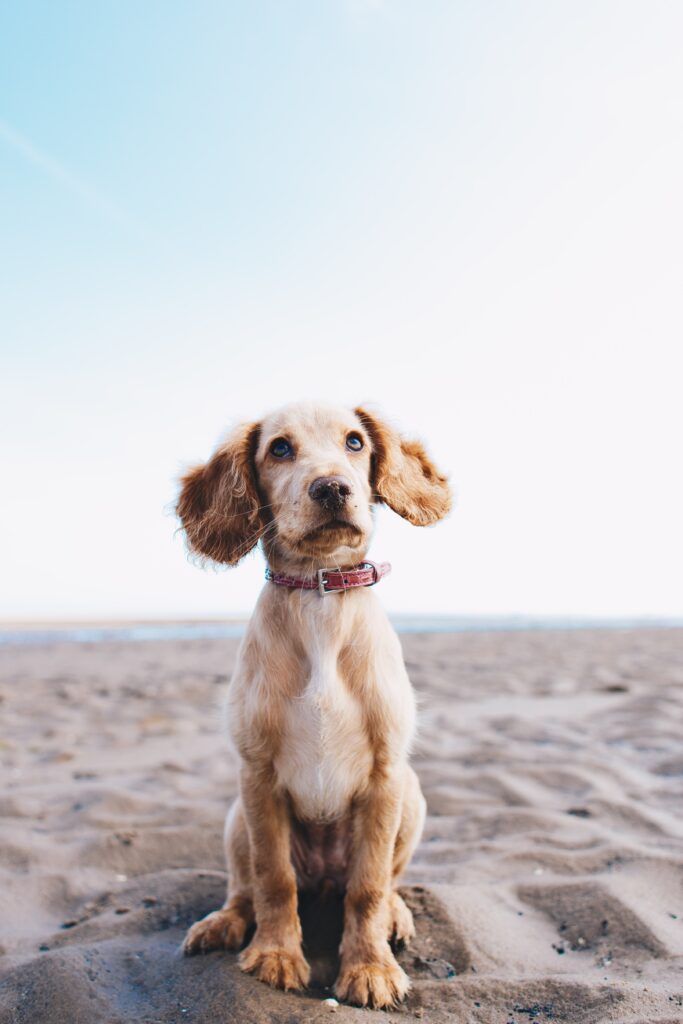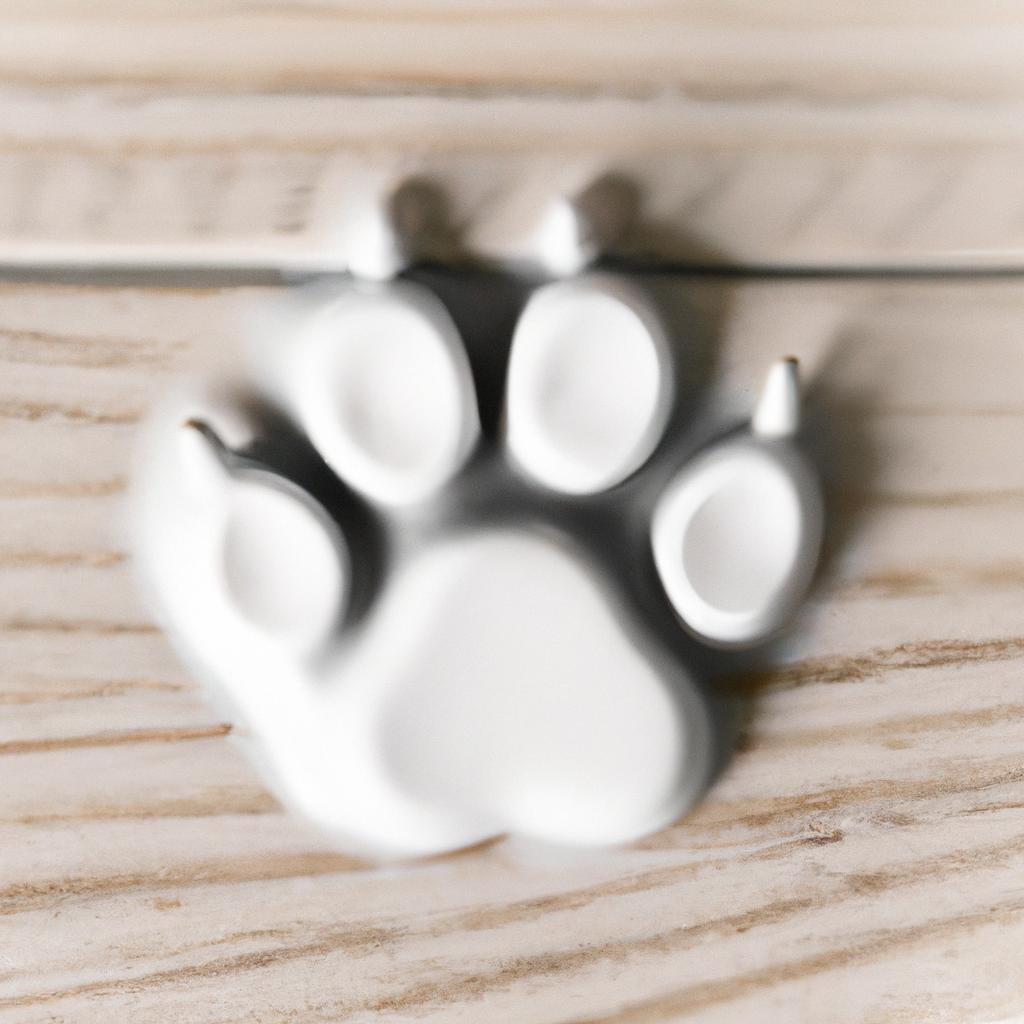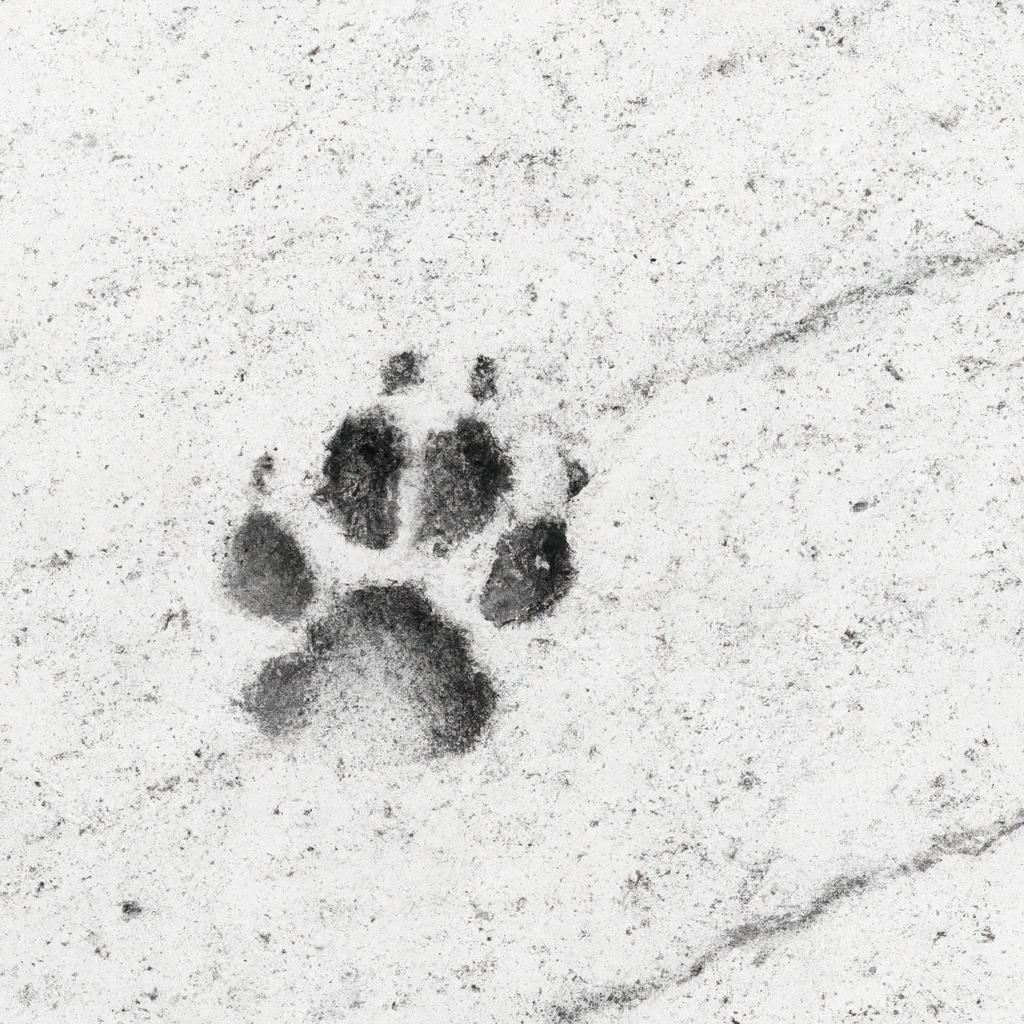Taking your furry friend for outdoor activities is a great way to keep them happy and healthy. However, this can often result in dirty and potentially harmful paws. So, how can you ensure your dog’s paws stay clean and healthy after an adventure in the great outdoors? In this article, we will explore some simple yet effective ways to protect your dog’s paws and maintain their overall well-being, allowing them to continue enjoying every adventure to the fullest.

Regular Paw Inspections
Signs of Injuries or Irritations
Regularly inspecting your dog’s paws is an essential part of their overall health and well-being. By taking the time to examine their paws, you can identify any potential injuries or irritations before they become more serious problems. Look out for signs such as cuts, scrapes, redness, swelling, or any unusual lumps or bumps. If you notice any of these signs, it’s important to take immediate action to prevent further discomfort or complications for your furry friend.
Cleaning Your Dog’s Paws
Basic Paw Cleaning
Cleaning your dog’s paws after outdoor activities is crucial for maintaining their cleanliness and overall health. Begin by filling a basin or sink with warm water and gently place one of your dog’s paws into the water, ensuring that you don’t submerge the entire leg. Use a mild dog shampoo or a gentle antibacterial soap to carefully cleanse the paw, paying close attention to the spaces between the toes and the paw pads. Gently massage the paw to remove any dirt or debris, and then rinse thoroughly with clean water.
Using Paw Wipes or Wet Towels
If you’re looking for a quick and convenient way to clean your dog’s paws, paw wipes or wet towels can be an excellent option. These pre-moistened wipes are specifically designed to remove dirt, bacteria, and allergens from your dog’s paws without the need for water. Simply wipe each paw thoroughly, ensuring that you clean between the toes and the paw pads. This method is especially useful for dogs who may be sensitive to water or for situations where access to water is limited.
Rinsing with Water
In situations where your dog’s paws are heavily soiled or muddy, rinsing them with water may be the most effective cleaning method. You can use either a handheld showerhead or a hose with a gentle spray attachment to wash away the dirt and debris. Begin by wetting the paws and then carefully apply a small amount of dog shampoo or mild soap. Gently lather the paws, paying close attention to the spaces between the toes and the paw pads. Rinse thoroughly, ensuring that all soap residue is removed.
Drying Thoroughly
After cleaning your dog’s paws, it’s important to dry them thoroughly to prevent any moisture from causing irritation or infections. Use a clean towel or paper towels to gently pat the paws dry, making sure to remove any excess water. Be gentle and avoid vigorous rubbing, as this can cause discomfort. Pay special attention to the spaces between the toes, as moisture can get trapped in this area. If your dog has long hair around their paws, consider using a blow dryer on a low, cool setting to ensure complete dryness.
Trimming Fur Around Paws
Regularly trimming the fur around your dog’s paws can help prevent matting and the accumulation of dirt and debris. Use a pair of dog grooming shears or clippers with a guard attachment to carefully trim the hair around the paw pads and between the toes. Take extra care not to nick or cut the delicate skin in this area. If you’re unsure or uncomfortable with trimming the fur yourself, consider seeking the assistance of a professional groomer to ensure the safety and comfort of your dog.
Protective Measures
Using Dog Booties or Shoes
One of the most effective ways to protect your dog’s paws during outdoor activities is by using dog booties or shoes. These protective coverings provide a barrier between your dog’s paws and the ground, preventing injuries from sharp objects, extreme temperatures, chemicals, or rough surfaces. Choose booties or shoes that are specifically designed for dogs, ensuring that they fit comfortably and securely. Introduce your dog to wearing them gradually, allowing them to get used to the sensation before heading out for activities.
Applying Paw Balm or Petroleum Jelly
Another protective measure for your dog’s paws is to apply a pet-safe paw balm or petroleum jelly. These products create a barrier on the paw pads, preventing them from becoming dry, cracked, or irritated. Before heading out for outdoor activities, gently massage a small amount of paw balm or petroleum jelly onto your dog’s paw pads, focusing on the areas that come into contact with the ground. This extra layer of protection can help keep your dog’s paws moisturized and healthy.
Using Paw Wax
Paw wax is a specialized product that forms a protective coating on your dog’s paw pads. It acts as a shield against harsh elements such as hot pavement, snow, ice, or rough terrain. Before heading outdoors, apply a thin layer of paw wax onto your dog’s paw pads, ensuring complete coverage. Allow the wax to dry before allowing your dog to walk on any potentially harmful surfaces. Paw wax is particularly useful during extreme weather conditions or when your dog will be exposed to challenging terrains.
Avoiding Harmful Chemicals and Substances
When venturing outside with your furry friend, it’s essential to avoid areas that may contain harmful chemicals or substances. These can include road salt, pesticides, fertilizers, and cleaners. These chemicals can be toxic if your dog licks their paws after coming into contact with them. Be mindful of the areas you visit and try to steer clear of places where you suspect such substances may be present. If your dog accidentally steps on or comes into contact with a potentially harmful substance, ensure that you thoroughly clean their paws to remove any residue.
Avoiding Extreme Temperatures
Just like humans, dogs can also face challenges with extreme temperatures. During hot weather, be cautious of hot pavement, concrete, or sand, as these surfaces can burn your dog’s paws. Opt for shaded walking areas or use booties to protect their paws from the heat. Similarly, during cold weather, ice and snow can cause discomfort or even frostbite. Regularly wipe your dog’s paws to remove any snow or ice balls that may form, or consider using booties to protect them from the cold surfaces.
Maintaining Good Hygiene
Regular Nail Trimming
Keeping your dog’s nails at an appropriate length is an important aspect of their paw care. Overgrown nails can cause discomfort and affect their ability to walk properly. Use a pair of dog nail clippers or a grinder specifically designed for dogs to carefully trim your dog’s nails. Take care not to cut into the quick, which is a sensitive area that can cause pain and bleeding. If you’re unsure or uncomfortable with trimming your dog’s nails, seek the assistance of a professional groomer or veterinarian.
Bathing Your Dog
Regular bathing is crucial for maintaining your dog’s overall hygiene, including the cleanliness of their paws. Choose a dog-specific shampoo that is mild and gentle on their skin. In a bathtub or suitable bathing area, wet your dog’s paws and coat, ensuring that you avoid getting water in their ears or eyes. Gently lather the shampoo onto their paws, taking care to massage the paw pads and spaces between the toes. Thoroughly rinse their paws to remove all shampoo residue. After bathing, use a clean towel to pat their paws dry.
Brushing Your Dog’s Coat
In addition to bathing, regular brushing of your dog’s coat can help remove any dirt, debris, or loose hair that may accumulate on their paws. This is especially important for dogs with longer hair or those who frequently engage in outdoor activities. Use a suitable dog brush or comb to gently remove any tangles or mats around their paws. Regular brushing can also help distribute natural oils, keeping their coat and skin healthy.
Preventing and Treating Fleas and Ticks
Fleas and ticks can pose significant health risks to your dog, including irritation and the transmission of diseases. Maintain a regular flea and tick prevention regimen as recommended by your veterinarian. This may include using topical treatments, oral medications, or specialized collars. Regularly check your dog’s paws for any signs of fleas or ticks, such as excessive scratching or small dark spots. If you notice any pests, consult your veterinarian for appropriate treatment options to ensure your dog’s paw health is maintained.

Proactive Health Care
Visiting the Veterinarian
Regular visits to the veterinarian are vital for keeping your dog’s overall health in check, including their paw health. Schedule routine check-ups to ensure that any potential issues are identified and addressed promptly. Your veterinarian can provide guidance on paw care and recommend specific products or treatments based on your dog’s needs. Establishing a strong relationship with your veterinarian will help ensure the ongoing well-being of your furry friend.
Monthly Check-ups
As a responsible dog owner, it’s essential to perform monthly check-ups on your dog’s paws to monitor their condition. Carefully inspect each paw, looking for any changes in color, texture, or the presence of lumps or bumps. Check for any signs of irritation, cuts, or scrapes. Trim any overgrown nails and remove any hair that may be causing discomfort or impairing their ability to walk properly. By making these regular check-ups part of your routine, you can address any potential issues before they escalate.
Vaccinations and Preventive Medications
Maintaining up-to-date vaccinations is a crucial aspect of your dog’s proactive health care. Consult with your veterinarian to ensure that your dog receives the necessary vaccinations to protect against common diseases and infections. Additionally, discuss preventive medications for heartworms, fleas, ticks, and other parasites that can greatly impact your dog’s overall health. By following a comprehensive preventive care plan, you can help safeguard your dog’s paws and their overall well-being.
Addressing Common Paw Problems
Cracked or Dry Paws
Cracked or dry paws can be uncomfortable for your dog and can lead to more severe issues if left untreated. To address this problem, consider applying a pet-safe paw balm or petroleum jelly. These products can help moisturize and protect the paw pads, alleviating dryness and preventing further damage. Additionally, avoid walking your dog on hot pavement or rough surfaces, as these can exacerbate the problem. If your dog continues to experience cracked or dry paws, consult with your veterinarian for further guidance and treatment options.
Irritations and Allergies
Paw irritations and allergies can be caused by various factors, including environmental allergens, certain foods, or even contact with irritants such as chemicals. If you notice your dog excessively licking or biting their paws, redness, swelling, or signs of discomfort, it’s important to address these issues promptly. Consult with your veterinarian to determine the underlying cause and develop an appropriate treatment plan. This may include allergy testing, changes in diet, or the use of medications to relieve symptoms and prevent further irritation.
Cuts and Abrasions
Cuts and abrasions on your dog’s paws can occur due to various reasons, such as stepping on sharp objects or rough terrain. If you notice any cuts or abrasions, gently clean the affected area with a mild antiseptic solution and apply an appropriate pet-safe wound ointment. Use a clean bandage or gauze pad to cover the injury and prevent further contamination. In cases of deep cuts or severe bleeding, seek immediate veterinary attention. Regularly monitor the wound for signs of infection, such as increased swelling, redness, or discharge.
Parasites and Infections
Parasites and infections can affect your dog’s paws and cause discomfort or more serious health issues. Fleas, ticks, mites, and fungal infections can all affect the paw area. Ensure that your dog is on a regular preventive treatment plan to protect against these parasites. If you suspect an infection or infestation, such as mange or a fungal infection, consult with your veterinarian for proper diagnosis and treatment options. Prompt intervention can prevent these issues from spreading to other parts of your dog’s body and maintain paw health.

Creating a Paw-Friendly Environment
Maintaining Clean Outdoor Spaces
Creating and maintaining a clean outdoor environment is essential for your dog’s paw health. Regularly remove any debris, sharp objects, or potential hazards from your backyard or outdoor areas where your dog spends time. Sweep away gravel, rocks, or twigs that may cause discomfort or injury. By keeping the outdoor spaces clean and free from potential dangers, you can provide a safe and healthy environment for your furry friend to roam and play.
Avoiding Sharp Objects
When walking your dog in public areas or natural settings, be vigilant and avoid areas with sharp objects such as broken glass, nails, thorns, or sharp rocks. These objects can cause cuts, scrapes, or even penetrate the paw pads. Walk on designated paths or in well-maintained areas to minimize the risk of encountering such hazards. Regularly inspect your dog’s paws during and after walks to ensure that they are free from any foreign objects or injuries.
Providing Proper Rest Areas
Ensuring that your dog has access to suitable rest areas is crucial for their paw health. Provide comfortable and supportive bedding, especially for dogs with joint or paw-related issues. Avoid hard or rough surfaces that can put pressure on their paws. If your dog spends time outdoors, provide a shaded area with a soft surface to rest on. By giving your dog adequate rest and providing them with a comfortable environment, you can help promote their overall well-being and maintain healthy paws.
Training and Behavior Management
Teaching Your Dog to Allow Paw Inspections
Training your dog to allow paw inspections is an important skill that can make routine care and maintenance easier for both of you. Start by gently touching your dog’s paws while offering praise and rewards. Gradually progress to holding and examining their paws, paying close attention to their reaction and comfort level. Gradual and positive reinforcement training can help your dog become more comfortable with paw inspections, making it easier for you to perform necessary care tasks such as trimming nails or cleaning paws.
Positive Reinforcement
Positive reinforcement is a powerful tool when training your dog and shaping their behavior. Reward your dog with treats, praise, or playtime whenever they exhibit desirable behavior during paw care routines. This positive association will help your dog see paw inspections, nail trimming, and other necessary tasks as positive experiences, reducing their anxiety or resistance. Be patient and consistent with your training, and always approach paw care with a calm and gentle demeanor to make it a pleasant experience for your furry friend.
Avoiding Excessive Licking or Chewing
Excessive licking or chewing of paws can be a sign of discomfort, anxiety, or underlying health issues. It’s important to address this behavior to prevent further damage or complications. First, identify and address any potential causes such as allergies, injuries, or anxiety triggers. Consult with your veterinarian to determine the underlying cause and develop an appropriate treatment plan. In the meantime, distract your dog from licking or chewing their paws by providing engaging toys or interactive activities that keep their focus away from their paws.

Exercising on Suitable Surfaces
Choosing the Right Terrain
When taking your dog for walks or engaging in outdoor activities, choosing the right terrain is essential for their paw health. Opt for grassy areas, well-maintained trails, or soft surfaces such as sand or dirt. These surfaces are more forgiving on your dog’s paws and provide cushioning and shock absorption. Avoid rough or abrasive surfaces like gravel, concrete, or hot pavement that can cause discomfort, abrasions, or burns. By selecting suitable terrain, you can ensure a safe and comfortable exercise experience for your furry friend.
Avoiding Hot Pavement or Concrete
During hot weather, it’s crucial to protect your dog’s paws from hot pavement or concrete surfaces. These surfaces can quickly heat up and cause burns, discomfort, or even blistering. Before heading out for a walk, place the back of your hand on the pavement or concrete to test its temperature. If it feels uncomfortably hot to your hand, it’s best to avoid or limit exposure to these surfaces. Choose shaded paths or walk your dog during cooler times of the day to prevent any potential paw injuries.
Avoiding Icy or Sharp Areas
In colder climates, icy or sharp areas can pose risks to your dog’s paw health. Ice can cause slips, falls, and injuries, while sharp objects hidden beneath the snow can cause cuts or scrapes. Avoid walking your dog on frozen bodies of water or areas covered in ice. Keep an eye out for any signs of discomfort, such as limping or reluctance to walk, indicating that the paws may be affected by the cold or sharp surfaces. Additionally, wipe your dog’s paws after walks to remove any ice or snow, and consider using booties for added protection.
Post-Activity Paw Care
Immediate Paw Check
After any outdoor activity, it’s crucial to perform an immediate paw check. Carefully inspect your dog’s paws for any signs of dirt, debris, cuts, or injuries. Remove any visible foreign objects, such as rocks or twigs, using tweezers or your fingers if it’s safe to do so. By addressing any issues promptly, you can prevent potential infection or discomfort. Remember to approach the paw check with a calm and gentle demeanor to avoid causing any stress or anxiety for your dog.
Cleaning and Drying Paws
Cleaning and drying your dog’s paws after outdoor activities helps remove any dirt, bacteria, or potential irritants. Use a gentle paw wipe or a damp towel to clean each paw, focusing on the spaces between the toes and the paw pads. Gently pat the paws dry using a clean towel or paper towels, ensuring that you remove any moisture thoroughly. Pay special attention to the spaces between the toes, as dampness can create an ideal environment for bacteria to thrive.
Inspecting for Injuries
While cleaning and drying your dog’s paws, closely inspect them for any injuries, cuts, scrapes, or signs of irritation. Be thorough in your examination, checking between the toes, around the paw pads, and on each paw’s surface. If you notice any concerns, such as redness, swelling, or discharge, consult with your veterinarian for appropriate treatment. Prompt attention to injuries or irritations can prevent them from worsening and help maintain your dog’s paw health.
In conclusion, keeping your dog’s paws clean and healthy after outdoor activities is an important aspect of their overall well-being. By regularly inspecting their paws, cleaning them thoroughly, and taking protective measures, you can help prevent injuries, irritations, and other common paw problems. Additionally, maintaining good hygiene, proactive health care, and a paw-friendly environment are crucial for your dog’s paw health. With proper training and behavior management, suitable surfaces for exercise, and post-activity paw care, you can ensure that your furry friend’s paws are always in optimal condition. Remember, a healthy paw leads to happy and active adventures with your beloved canine companion.





